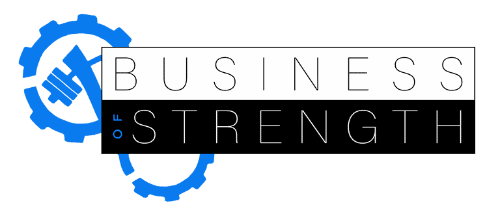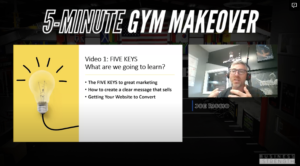In the modern world of human performance we’re becoming overly specialized. We are deep diving issues without taking a step back and looking at the bigger picture. We’re evaluating 150lb 5’9 athletes for AFIR and Left AIC Patterns when they don’t even experience enough training stress to display these patterns. Furthermore, even if they did, they don’t inhibit this athlete’s performance.
If you work with a large volume of individuals (we work with up to 300+ people a week) you will begin to see common patterns amongst your community. Yes, everyone has individual postures, respiratory issues, and faulty gait mechanics. This is why you access. However, you must have criterias for these individuals as it correlates to performance. Otherwise, you’re looking for the wrong things and you’re not focusing on needle moving training principles.
Below, I’m going to break down 3 ways to make your assessments better in your training business.
You Must Have General and Specific Components
In my eyes, every assessment can be categorized as either specific or general. You need to see the whole picture. Every movement paints and contextualizes the individual. For example, if right away you look for IR/ER of the femur but don’t have them squat and turn to 10 yards…you’re missing the boat.
Contrarily, if an athlete passess a general assessment with flying colors and there’s no specific component to see compensatory patterns – you also are leaving a ton of room for improvement on the table (pun intended). Below, is an example of our general warm up. This can be used with any athlete or individual no matter what sport they play.
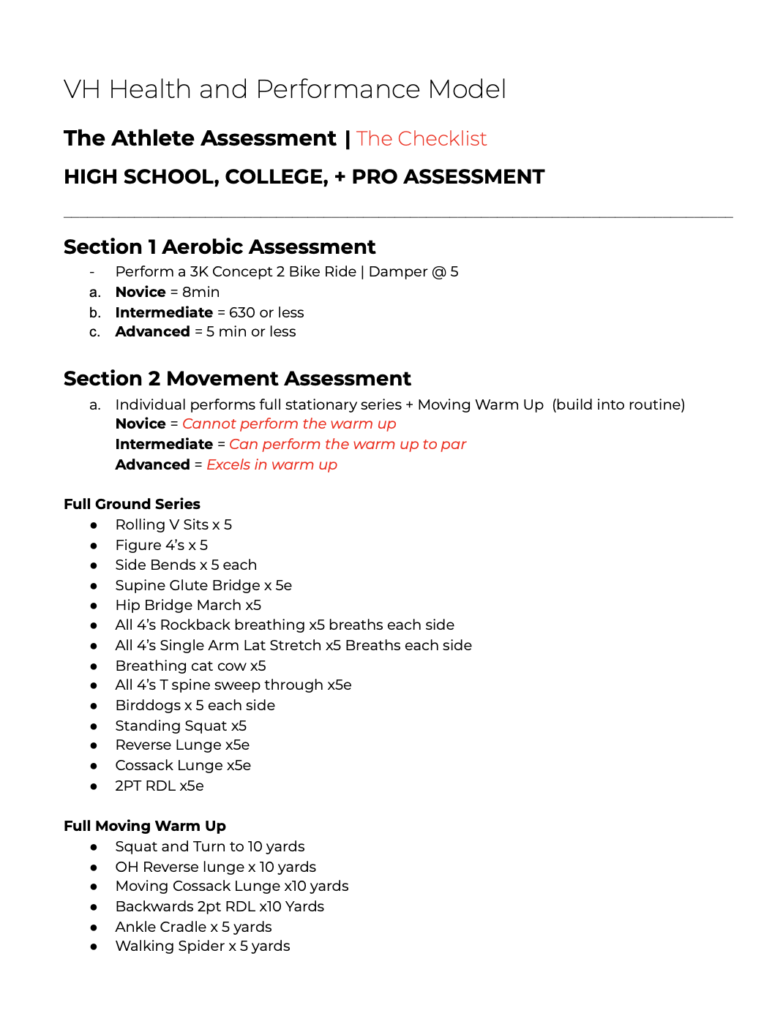
Don’t Access for the Sake of Accessing
My biggest pet peeve is when an assessment takes too long. It shows me you don’t have a process or you don’t know what you’re looking for. At VH, we have weekly coaches meetings in which I walk our entire team through our standard assessment process. They take no longer than 30 minutes.
Now, if you have further knowledge of a subject matter and can take the assessment further – by all means do so!
However, if you work in a business with other coaches you want the potential athlete to have the same experience with each coach. If each coach has their own “assessment process” what kind of business is that?
Do you think Mclarens Sales Rep each have different sales processes? Of course not. However, each sales rep has different levels of knowledge and personality that they can inject into the “standard assessment” process that will elicit further rapport.
Training is one continuous assessment.
Your initial assessment is the barrier to entry in working with you or one of your coaches. If it’s the same with every coach you can on board more athletes, serve more people, and ultimately become more profitable.
Be prepared to remove your preconceived bias because you’re trying to manage internal fluid pressure in anterior to posterior supine half kneeling lift.
We ensure all of our coaches are able to perform our standard assessment.
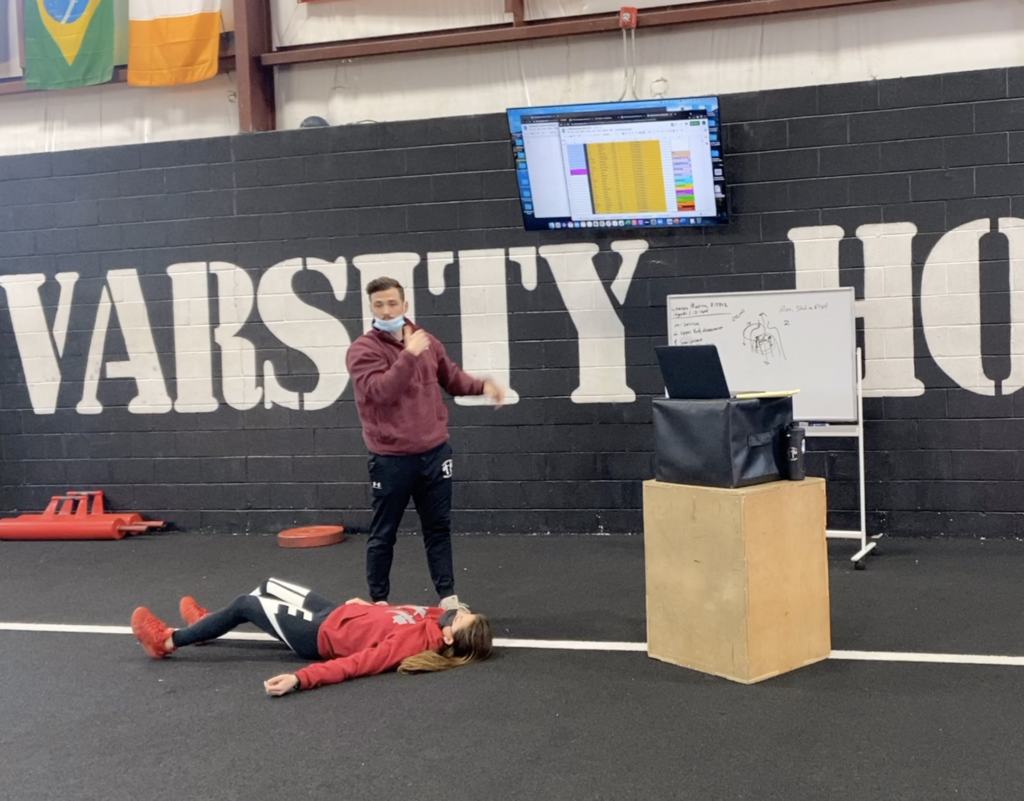
Create A “Standard” Assessment
This is a follow up from #2, you need a proven process.
I can hear a lot of speciality coaches yelling at me through the computer already.
Everyone has individual orientations, postures, respiration patterns, and faulty gait mechanics. However, every strategy works for 90% of the individuals you’re going to work with. They will exhibit the same patterns and problems.
You need to account for this.
If they have secondary and tertiary compensations – this is where your training knowledge comes into play. You need to be able to dive deeper.
The reality is, not everyone on your staff will be able to possess the same knowledge you do as it pertains to human performance training. That’s ok!
As I alluded to before, there needs to be a standard, a system for every single individual that walks through your doors and wants to train.
If you’re unavailable for an assessment, do you just not intake people on this day?
If each of your coaches delivers a different assessment how do you handle this in their programming on the back end?
How do you handle a large influx of athletes if every on board is different?
These are extremely basic questions that you should have answered. If not, it’s time to re-evaluate the way you on board potential clients.
Below is an image of some of our standard assessment processes. This is simply a checklist of what MUST get done at every touch with whomever walks inside our doors.
Below is an example of our performance assessment we use with all of our athletes during the on board process.
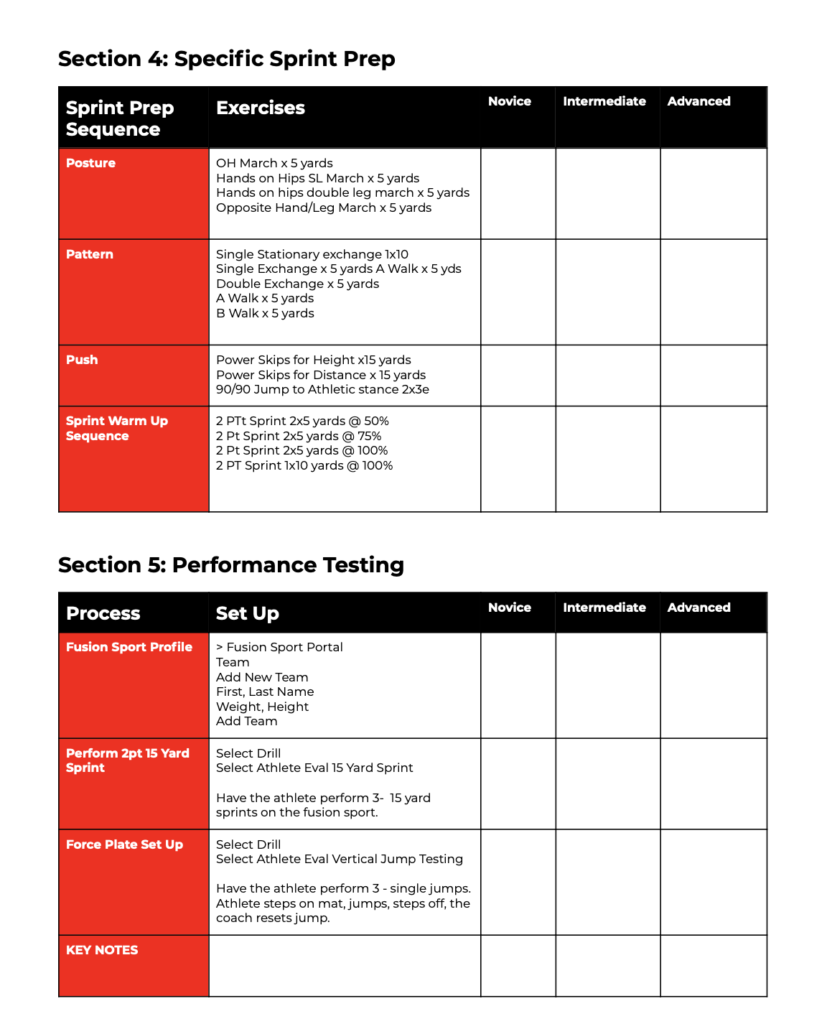
Every coach must be able to perform the exact same assessment so we can collect the same results, organize, and implement the right training program.
If you guys have any questions let us know below!
Adam.
